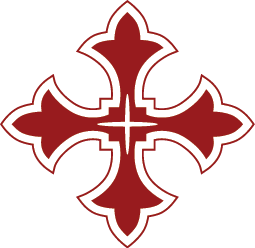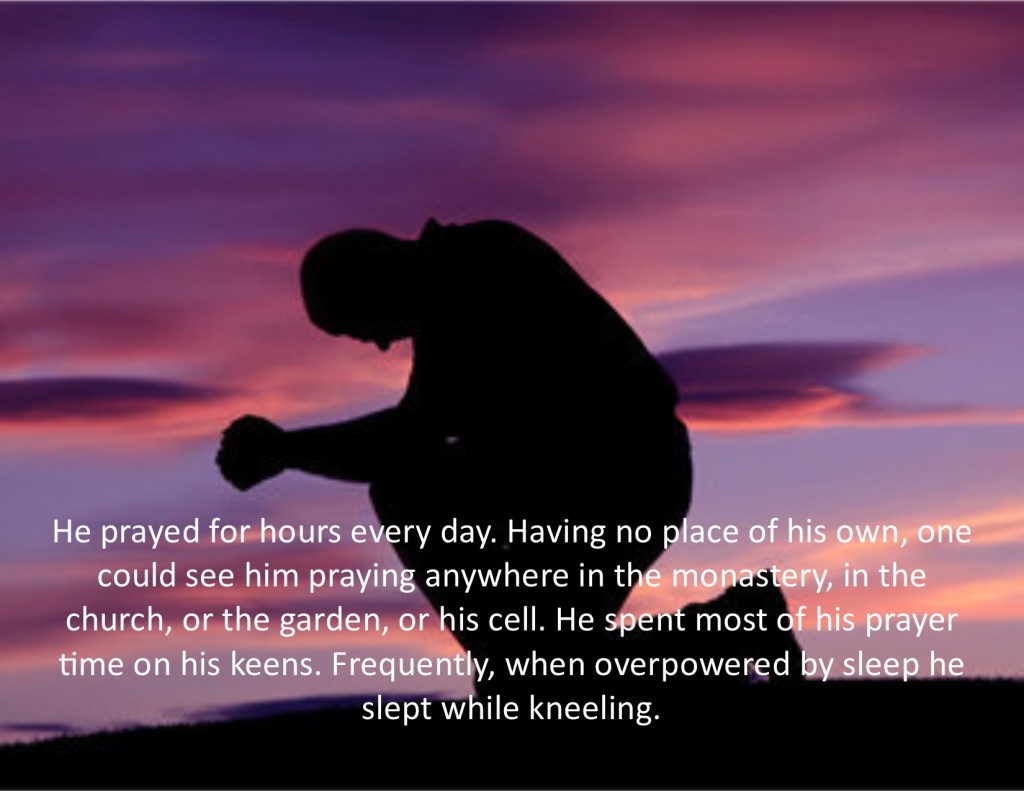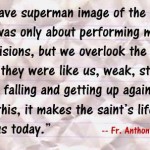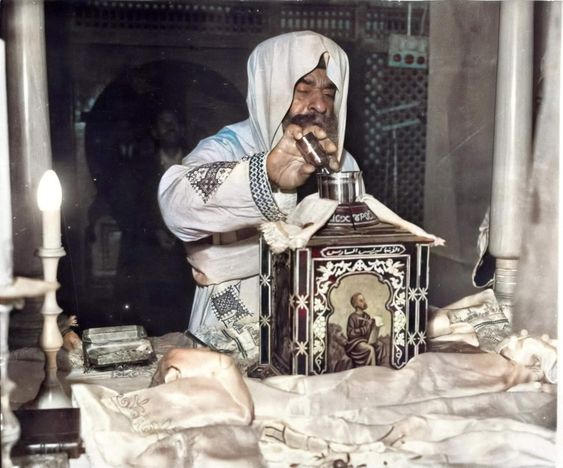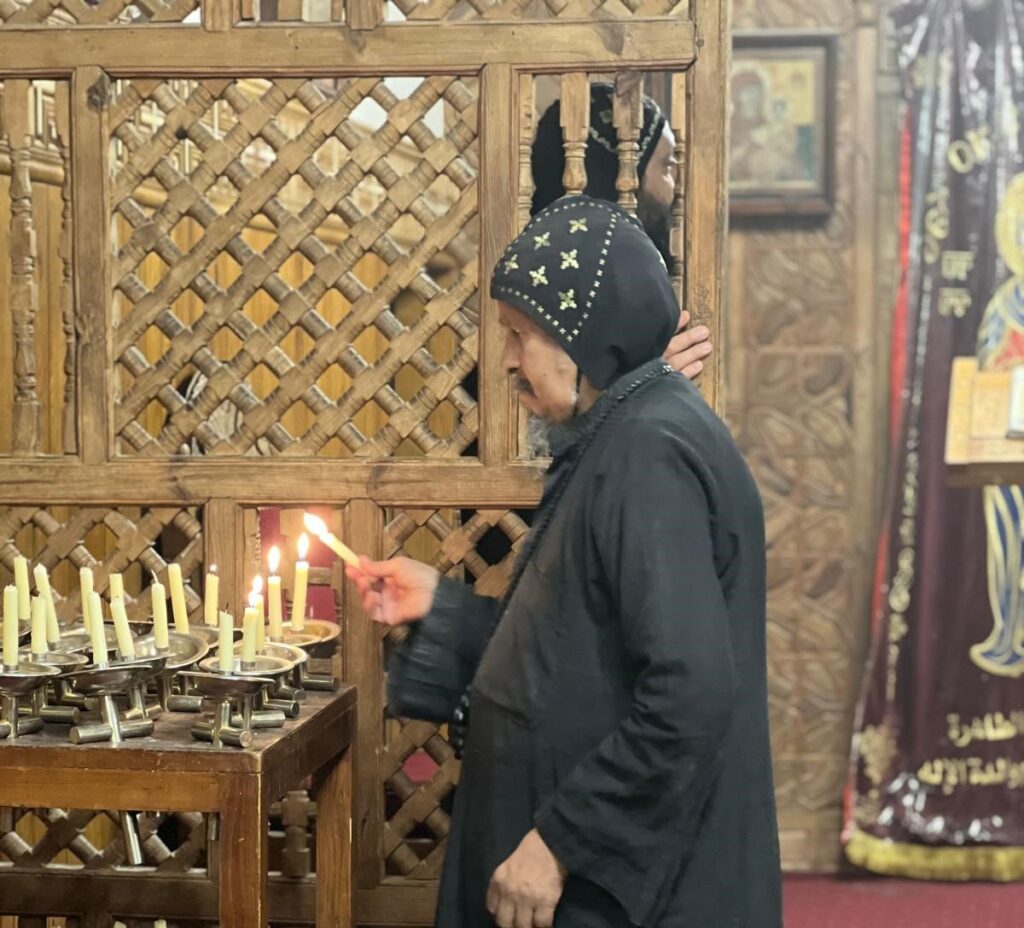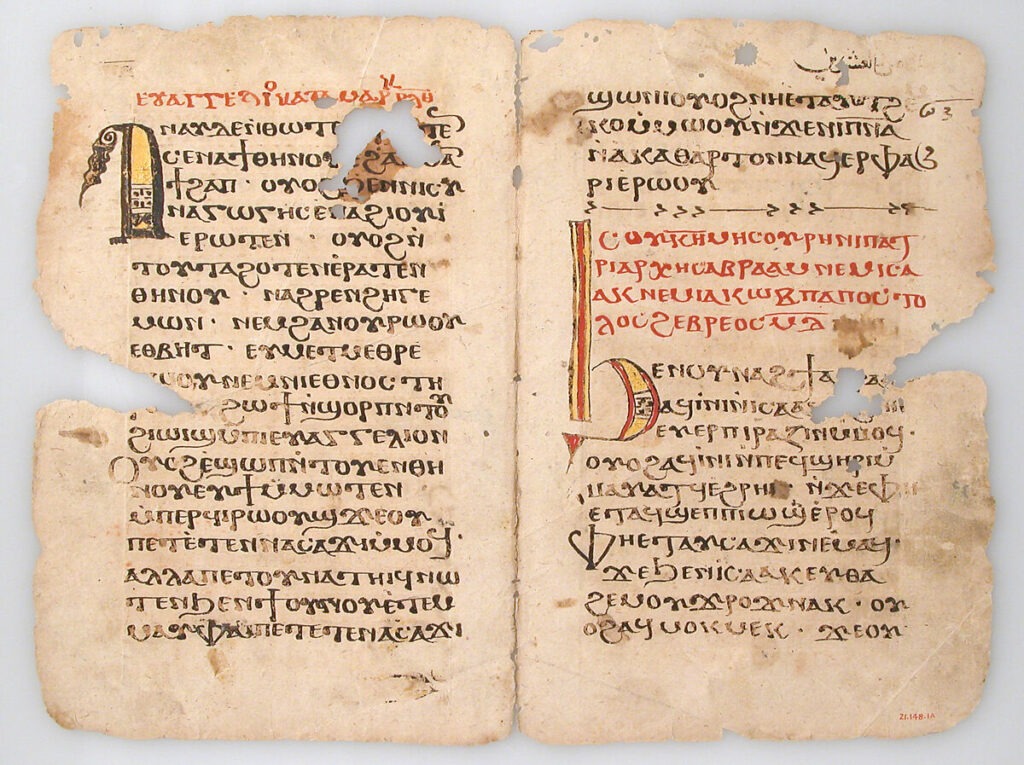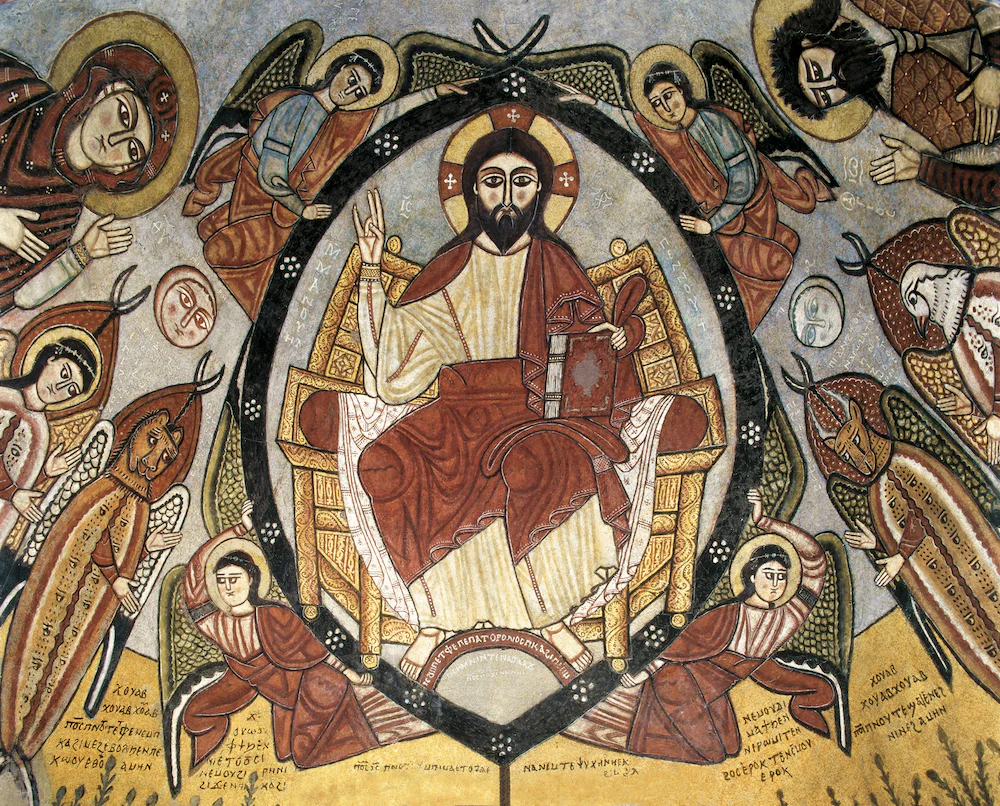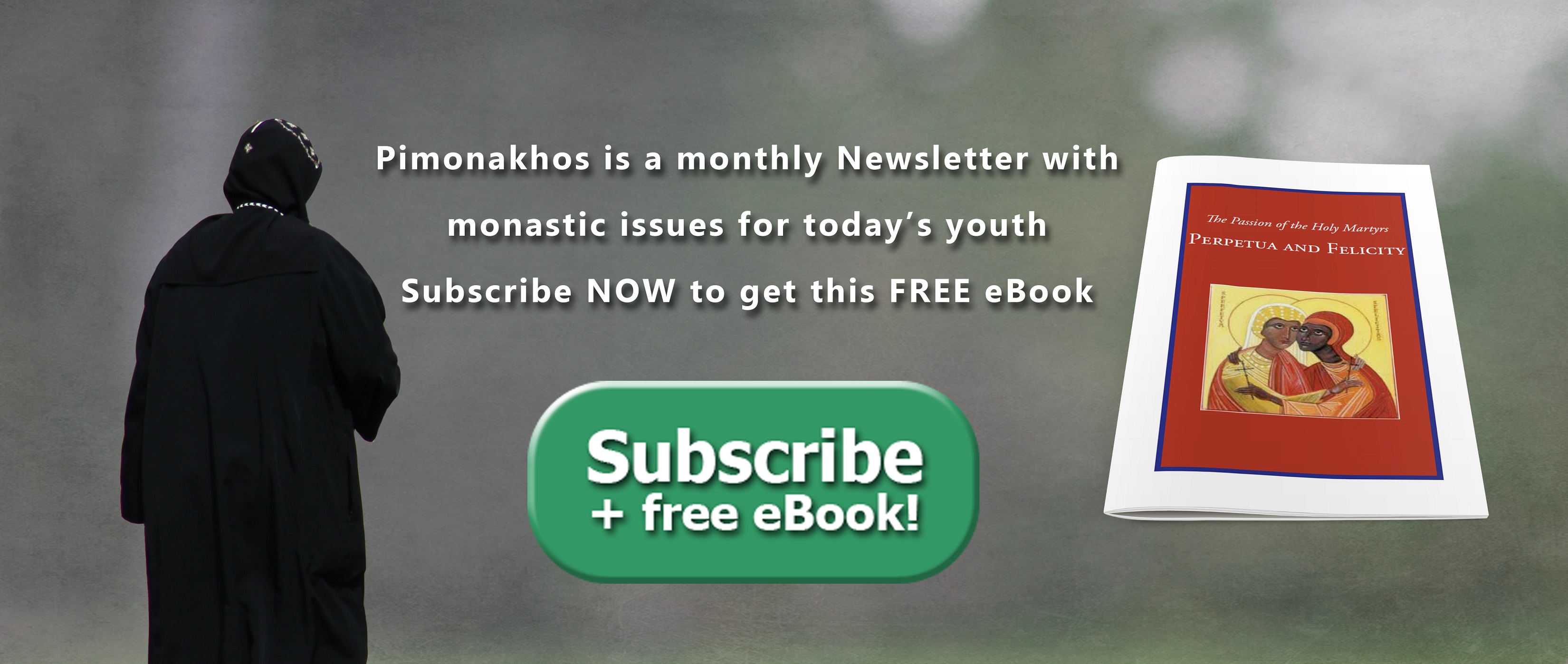In December 1976 when the monks of St. Antony attended the funeral service for Father Yostos they knew that an angel had departed from their monastery. For more than fifteen centuries the monastery, which was named after the great Saint Anthony and built near his cave, has been standing at the bottom of a high …
In December 1976 when the monks of St. Antony attended the funeral service for Father Yostos they knew that an angel had departed from their monastery. For more than fifteen centuries the monastery, which was named after the great Saint Anthony and built near his cave, has been standing at the bottom of a high mountain looking over the Red Sea. In its long history it has seen many saints, and it gave the Church a number of its Patriarchs and bishops. But here we do not see a man who trod the road of sanctity through a life of heroic virtues. He was not a bishop, nor an abbot, nor even a preist. He did not preach, and he left no teachings, no writings and had no disciples.
Early Years
Father Yostos was born about AD 1910 in the village of Zarabee, a few miles from the ancient Coptic Monastery Al Moharraq in the province of Assiut. He was given the name Naguib at his birth. His father Shah-hat was a tailor, and this was the trade Naguib was trained in his early years. In his childhood he learned to read both Arabic and Coptic. He was chosen to be a reader in the church, and thus he assisted in the liturgy. About the year 1939 he answered the desert call and stayed as a novice in the Monastery of Saint Paul the hermit. In 1941 he moved to the neighboring Monastery of Saint Antony where he became a monk. !
A Life Of Simplicity And Poverty
During his thirty-five years as a monk the only sermon Father Yostos gave to his fellow monks and to the visitors of the great monastery and actually the only legacy he left for the whole Church was his simple life. Poverty has been always one of the primary vows of monasticism everywhere, but it reached a new dimension in Father Yostos; he simply owned nothing. He used to carry no money; the small monthly allowance he took from the monastery, he held with one of the brethren who kept the money and gave it all to the abbot a short time before the death of Father Yostos. The money was used later to buy carpets for the monastery.
All the clothes of Father Yostos consisted of a worn-out tunic, a cap that became colorless through age, and an old shoe which he even rarely used. During the cold winter months he covered his shoulders with a blanket which a poor man would hesitate to keep in his house. These same clothes were later treasured by pious people who wanted to get the blessing of the man of God after his departure.
One day a wealthy lady visited the monastery to meet Father Yostos. When she saw him she was repelled by his dress and could not bear looking at his ragged clothes. She later saw him in the church, this time transfigured with spiritual glory, and she smelt the fragrance of beautiful incense emanating from him. The amazed lady tried to meet the Saint after church, in order to confess her guilt and declare her sorrow. But he fled and she never saw him again.
The cell of Father Yostos reflected his character. It consisted of two rooms built of clay and roofed with palm branches with no windows. Anyone could peep through or go inside because it had no door. There was nothing in it but the bare floor, covered with tiny gravel for lack of care, a small old mat and a pitcher for water. There was no bed, no mattress or pillow, no chair, nor even a plate or a cup. Everything there was placed on the floor the hard bread, the dry tomatoes, dates and onions. There was nothing of importance in the cell except the volumes of the Psalmody, the Church books for the Divine Office.
In fact Father Yostos did not consider that the cell was his. He used to wander in the monastery, day and night. When he needed rest, he sat under a tree or next to a wall. In his early years he slept on a tree block fallen on the ground. He ate his meals mostly sitting under a tree in the garden of the monastery. He used to fast for long hours after which he ate the bread fallen from the common table, which the monks used to throw away to the sheep. Sometimes he ate boiled beans. He had also a recipe of his own composed of bran, dried leaves, bread and onions. He never ate meat. His daily portion of food he gave to the workmen in the monastery or offered to the cats which used to follow him when he took his share of the cooked meal.
Spiritual Success
For Father Yostos Scripture was his constant companion. He could recite long portions of the Epistles of Saint Paul. He had deep knowledge of the personalities of the Bible. His answers to questions were mostly by verses from Scripture. He loved the Church, its liturgy, its saints, even its building. He used to be seen kneeling in prayer in front of the church during the night. When the bell called the monks for the Daily Office, he was the first to enter the church. When time came for departure he did not like to leave; many a time the brethren had to use force to get him out of the church. During the worship he stood with his gaze fixed toward the icon of Christ. He sang the psalmody in beautiful tunes, in the Coptic tongue which he spoke fluently. He approached the Holy Mysteries in reverence and fear. When he served in the altar during feast days he used to be dressed in the splendid tunic of the deacon, something totally in contrast to his usually poor clothing.
He prayed for hours every day. Having no place of his own, one could see him praying anywhere in the monastery, in the church, or the garden, or his cell. He spent most of his prayer time on his knees. Frequently, when overpowered by sleep he slept while kneeling. In his cell he did numberless prostrations on the ground which, for lack of care, was paved with sand and fine gravel; kneeling on these was an agony by itself. For the prayers of the hours he used no book as he memorized all the psalms by heart.
To Heaven
Father Yostos died as simply as he lived. He was sick for a few hours before his death. One day he was found lying down with a fever in front of the guest house. A brother carried him to one of the rooms in the monastery where he gave up his spirit. One of the monks later saw a light shining around the place where Father Yostos was buried. Troops staying near by stated that a brilliant light had been flashing from the monastery for several successive nights. Also they saw the figure of a man in white clothes who carried a strong light and walked along the high wall surrounding the monastery. The monks of Saint Antony believe that Father Yostos who used to walk inside the monastery during the night has not left and is still, after his departure, touring the place where he has lived for so many years, and which he still loves.
Join Us: Sign Up Today!
Tags:

